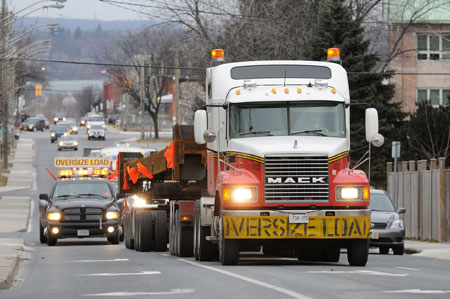Basic Connections
How Connections Impact Design
PICK YOUR METHOD OF FIRE PROTECTION FIRST! EVERTHING THAT FOLLOWS, IN BOTH THE BASIC CONNECTIONS AND INNOVATIVE CONNECTIONS INFORMATION, COULD BE WRONG, IF EXPOSED STEEL IS NOT PERMITTED BY THE FIRE CODE OR IF A THIN INTUMESCENT COATING IS EITHER UNAFFORDABLE OR INSUFFICIENT.
Why Do We Connect Steel?This is the starting point of connection design in steel buildings. Steel is a framed system, comprised by longer elements that must be connected to create the larger whole of the structural frame. We connect the elements when they change direction. We connect elements when they are too long to transport. We connect elements to achieve load transfer and resist certain types of forces. Unlike reinforced concrete that is normally monolithic in nature, steel structures are created from joining discreet elements. The choice of the element as well as the way it is connected to the next must satisfy both structural, and if used as AESS, aesthetic criteria.
 |
An escort is required to transport large 70 tonne trusses from Hamilton to New York City for New School. Courtesy Walters Inc. |
Transportation Limits Size. After the steel has been fabricated in the fabrication shop, it is transported to the site, normally by truck. The length of the truck bed will determine the length of the member/assembly. The path to the site must be carefully mapped to determine available heights (bridge overpasses figure in here) and road widths. It is expensive to require a police escort or for the roads to be cleared for oversized elements. The best place to fabricate steel is in the fabrication shop. This provides the easiest means to handle and turn the steel for access and climate controlled conditions for the workers. Good preplanning of transportation can allow for the minimization of site connections.
The route to the site must also map out road widths and turning radii. Congested urban sites might require the shipping of smaller pieces if site access is constrained.
Steel is also transported by barge if large pieces are better serviced this way and if on and offloading of the barge is possible. This can avoid the use of busy highways. Many bridge elements are transported in this fashion to access the site.
Architecturally Exposed or Plain Structural? Obviously exposed connections that form a key aspect of the architectural expression of a building will have different requirements than plain structural steel. The latter must satisfy loading and the design of the connections will be decided upon largely by the Engineer and Fabricator. AESS detailing is addressed in the AESS section of this web site. There are numerous points to consider when making AESS connections, but the basic strategies as outlined in this section of the web site, remain the same regardless.
Bolted or Welded Connections? The choice to bolt or weld lies in part with: structural requirements; aesthetic preference (AESS); and, constructability. Bolting tends to be quicker from the perspective of site erection, and therefore less costly. Welding may be required in order to transfer certain kinds of loads more effectively or to keep the overall size of the connection tighter. We will look more closely at these in the sections under bolted or welded connections.
Developing a Connection Strategy. It is easier to proceed with the design, particularly of AESS, if there is a strategy adopted at the outset. The basic choice to bolt or weld, combined with the selection of a fire protection method, will immediately begin to inform the nature of the detailing of the structure.
